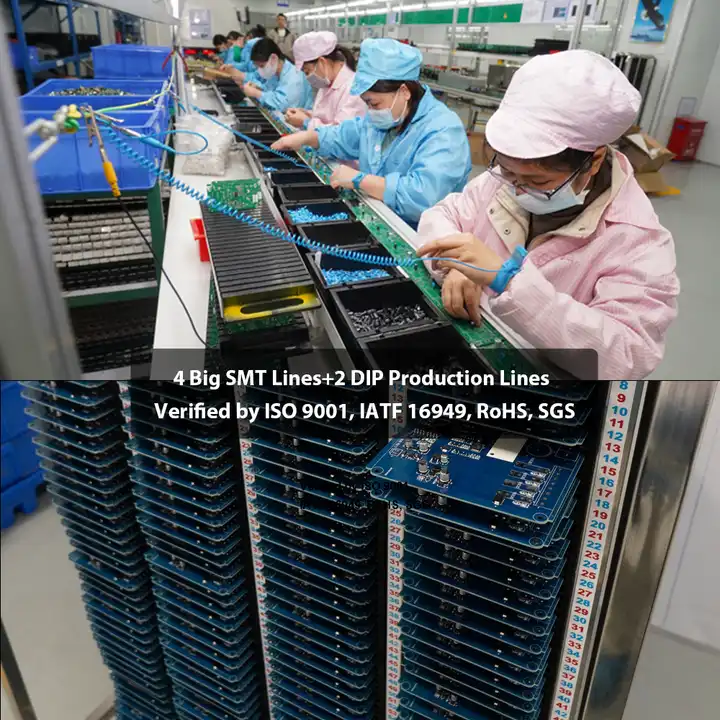Soldering PC boards is a fundamental skill for electronics enthusiasts and professionals. Whether you’re assembling a DIY project or working in a manufacturing environment, soldering is crucial for reliable connections and functional circuits. Next, we’ll explore the how to solder printed circuit board step by step.
Materials Needed:
Printed circuit board (PCB)
Soldering iron
Solder wire (preferably rosin-core solder)
Flux (optional but recommended)
Desoldering pump or solder wick (for rework)
Safety goggles
Ventilation (if soldering in a confined space)
Prepare Your Workstation
Before soldering, it’s essential to set up a clean and well-organized workspace. Ensure adequate ventilation to prevent inhaling harmful fumes released during soldering. Wear safety goggles to protect your eyes from splattering solder. Place your electronic board on a stable surface, such as: heat-resistant mat or a soldering workstation.
Heat Up Your Soldering Iron
Plug in your soldering iron and allow it to reach the desired temperature. The optimal temperature for soldering typically ranges between 350°C to 400°C (660°F to 750°F), depending on the type of solder and components you’re working with. A properly heated soldering iron ensures efficient solder flow and minimizes the risk of cold joints.
Prepare the Components and PCB
Double-check your components to ensure they are correctly oriented and positioned on the PCB board. Using a flux pen or a brush with small amount of liquid flux to clean the solder pads on the PCB. Flux helps remove oxidation and promotes better solder wetting, ensuring strong and reliable connections.
Apply Solder to the Iron Tip
Before soldering, “tin” the tip of your soldering iron and wipe off any excess solder on a damp sponge or brass wire cleaner. This process helps improve heat transfer and prevents oxidation on the iron tip.
Heat the Joint and Apply Solder
With the soldering iron in one hand and the solder wire in the other, carefully heat the component lead and the corresponding solder pad on the PCB simultaneously. Once the solder pad reaches the melting point of the solder, touch the solder wire to the junction of the component lead and the pad. Allow the solder to flow evenly around the joint, forming a shiny fillet. Avoid applying excessive solder, as it can lead to solder bridges and poor connections.
Inspect and Clean the Solder Joints
After soldering each joint, visually inspect them to ensure they are smooth, shiny, and free of defects, such as cold joints, solder bridges. If you encounter any issues, reheat the joint and add a small amount of flux to improve solder flow and rework the connection if needed.
Repeat the Process
Continue soldering each component onto the PCB, following the same steps outlined above. Take your time and work methodically to ensure precision and accuracy. Pay close attention to component orientation and alignment to prevent assembly errors.
Clean Up and Test
Using a cleaning solvent, isopropyl alcohol and a soft brush to remove any excess flux residue. Inspect the entire board for any solder splatters or debris that may cause short circuits. Finally, test the assembled circuit to verify functionality and troubleshoot any potential issues.
Soldering printed circuit boards is a skill that requires practice and patience to master. After soldering, you need to inspect the entire board for any solder splatters or debris that may cause short circuits. Knowing how to solder printed circuit board, you can achieve professional-quality solder joints and reliable circuit connections.


